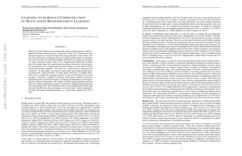Neural Models of Text Normalization for Speech Applications
Machine learning, including neural network techniques, have been applied to virtually every domain in natural language processing. One problem that has been somewhat resistant to effective machine learning solutions is text normalization for speech applications such as text-to-speech synthesis (TTS). In this application, one must decide, for example, that 123 is verbalized as one hundred twenty three in 123 pages but as one twenty three in 123 King Ave. For this task, state-of-the-art industrial systems depend heavily on hand-written language-specific grammars.We propose neural network models that treat text normalization for TTS as a sequence-to-sequence problem, in which the input is a text token in context, and the output is the verbalization of that token. We find that the most effective model, in accuracy and efficiency, is one where the sentential context is computed once and the results of that computation are combined with the computation of each token in sequence to compute the verbalization. This model allows for a great deal of flexibility in terms of representing the context, and also allows us to integrate tagging and segmentation into the process.These models perform very well overall, but occasionally they will predict wildly inappropriate verbalizations, such as reading 3 cm as three kilometers. Although rare, such verbalizations are a major issue for TTS applications. We thus use finite-state covering grammars to guide the neural models, either during training and decoding, or just during decoding, away from such {``}unrecoverable{''} errors. Such grammars can largely be learned from data.
PDF Abstract

